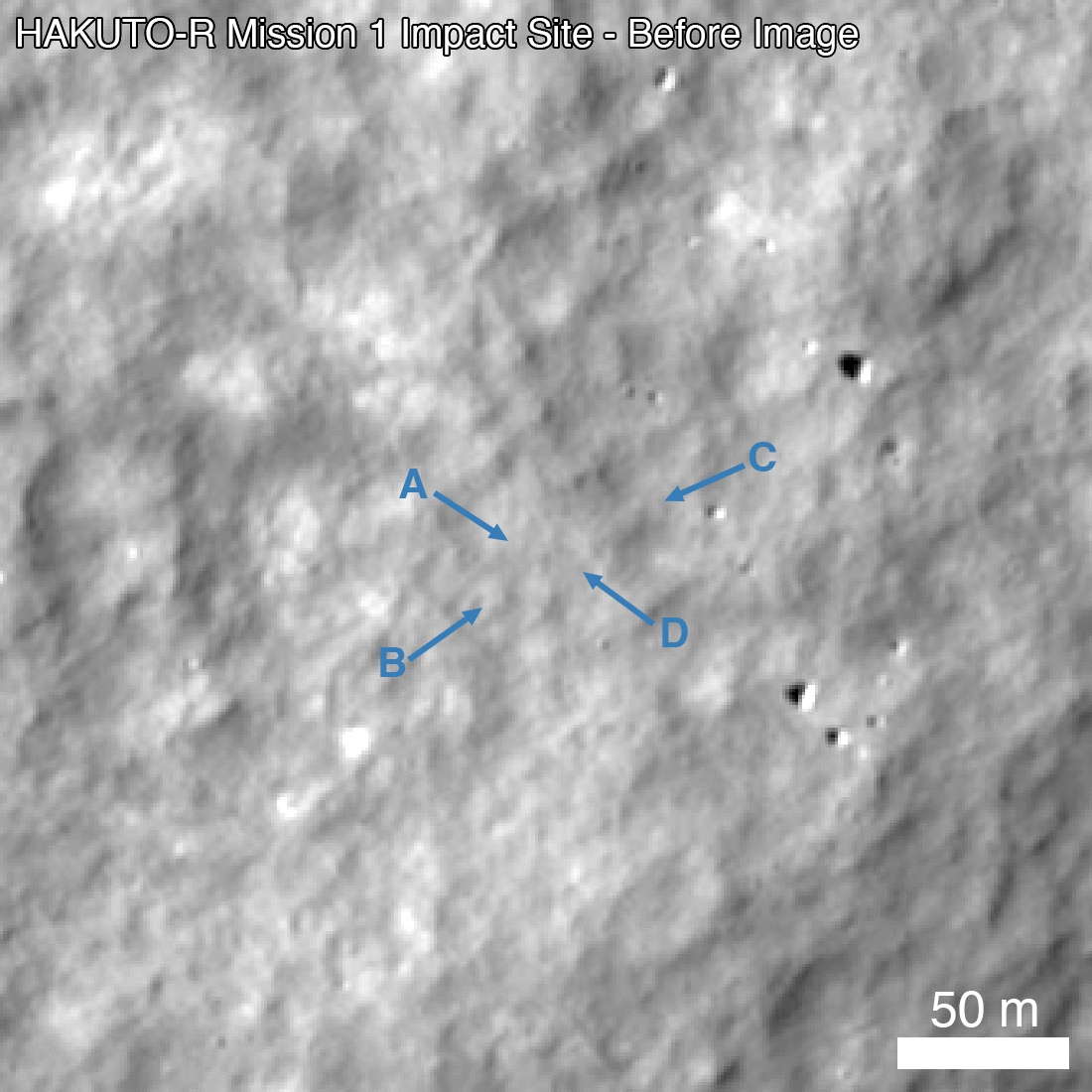New images from NASA's Lunar Reconnaissance Orbiter (LRO) appear to show the crash site where the Japanese Hakuto-R Mission 1 lunar lander impacted the surface of the Moon a month ago.
The refrigerator-sized HAKUTO-R was built by the startup company iSpace and was launched in December 2022 with the goal of becoming the first commercial lunar lander to touch down safely on the Moon. However, during landing operations on April 25, 2023, communications ceased just moments before touchdown should have occurred, and the lander was presumed lost.
A day later, LRO flew over Hakuto-R’s targeted landing area and took ten images around the landing site with its Narrow Angle Cameras (NACs). The LRO team said the images covered a region roughly 40 km by 45 km (25 X 28 miles). For a 'before and after' comparison, they were able to use a NAC image acquired before the landing to hunt for the remains of the lander by searching for any changes in the landscape.
Someone on the team must have eagle-eye vision, as the changes are quite subtle.
Hakuto-R was programmed to descend into the 86-km (54-mile) -wide Atlas Crater, located in the northeast quadrant of the Moon's near side. The LRO Camera (LROC) team said they identified an unusual surface change near the intended landing site, noting at least four prominent pieces of debris and several small changes. In the center of the image above, a bright object appears in the 'blink' comparision, as well as several bright pixels and dark pixels surrounding it. The larger dark objects that are in both the before and after shot are nearby boulders. The camera team suggested the new objects could be a small crater at the center with different parts of the lander body surrounding it. They said this site will be analyzed more over the coming months as LROC has the opportunity to re-image the site under various lighting and viewing geometries.
This ratio image, below, which was created by dividing the data from the after and before images shows the impact site a little clearer. The LRO team said the impact created an area of higher reflectance, approximately 60-80 meters (200-270 ft) across.
The ispace Series 1 Lunar Lander stood about 2.3 meters tall (7.5 ft) and has four landing legs, and fully fueled with its payload, it weighed roughly 1000 kg (2,200 lbs). The main body is an octagonal prism, 1.6 meters high and about 1.6 meters (5.25 X 5.25 ft) across its widest diameter. It has one main landing thruster and six assist thrusters. Its electronics are powered by solar panels.
If it had been successful, it would have deployed two mini-rovers for surface exploration, and other payloads would have conducted scientific experiments for government and commercial space efforts.
Hakuto-R mission launched on Dec. 11, 2022 along with the Lunar Flashlight mission on a SpaceX Falcon 9 rocket. Hakuto-R was originally designed for the Google Lunar XPrize, but it got a chance to launch later, long after the competition was over.
The webcast of the landing was exciting to watch, and was heartbreaking to see the faces of the team when they realized the landing failed.
iSpace is planning a second lunar lander mission perhaps in 2024, depending on the success of this first mission. In addition to launching lunar landers, the company aims to one day deploy satellites.
 Universe Today
Universe Today



